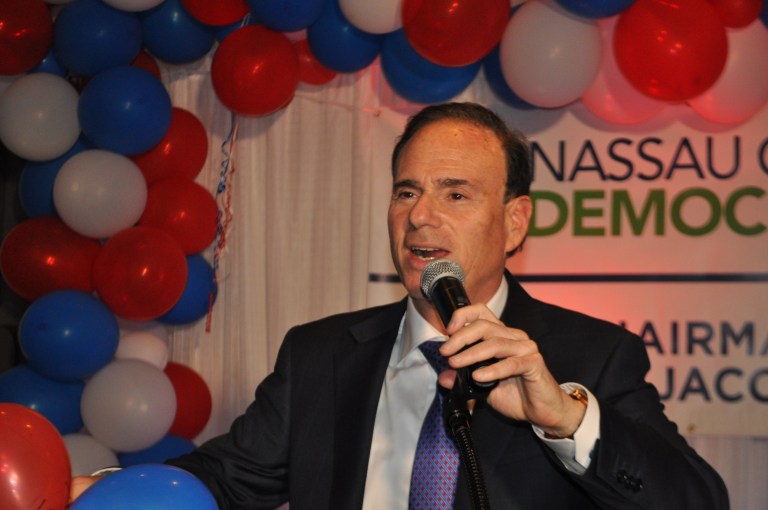
In 2008, Democrats rode a wave of support to take control of the state Senate for the first time in four decades. Two years later, the party’s majority slipped away and the Republicans once again controlled the chamber.
Now, following Democratic victories that give the party a decisive majority in the Senate, Nassau County Democratic Party Chairman Jay Jacobs has warned senators not to make the same mistakes as in the 2009-10 session.
“They need to remember that New York is a very big and diverse state, both geographically and demographically,” he said. “If you don’t respect each of the various parts of New York, you do so at your own peril.”
He said he felt the party was too focused on New York City the last time the Democrats controlled the Senate. While many of the state’s Democratic senators come from the city, Long Island helped to flip several seats — such as Anna Kaplan’s victory over Sen. Elaine Phillips (R-Flower Hill) — that gave the Democrats a majority.
“Long Island, which makes up a significant portion of the state’s population … has very unique challenges and benefits,” he said. “And the Democratic majority has to be cognizant of those challenges and look to build on the benefits.”
Being too focused on the city was not the only undoing of the Democrats in 2009. Infighting over who would serve as Senate majority leader split the party. In a New York Daily News article, Brooklyn Democratic Party leader Frank Seddio said unity would be key to holding on to the Senate for more than one term.
In 2009, the Democrats had a slim 32-30 majority. When the elected senators take office in January, the party will have 39 of the Senate’s 63 seats and possibly 40 if Brooklyn Democratic Sen. Simcha Felder, who caucused with Republicans, returns to the fold.
Jacobs said he would like to see the state government, which is now controlled at every level (Assembly, Senate, governor) by Democrats, look into reducing property taxes for Long Island residents.
“That is the number one issue,” he said.
He also described the island’s transportation system as “difficult,” noting the numerous delays and setbacks on the Long Island Rail Road. Protecting the environment was another crucial issue to local residents, especially Long Island Sound and the underground aquifers that provide Nassau County with drinking water.
“Then of course, we have the same challenges that other areas of the state have, such as economically depressed neighborhoods and schools that need more funding,” he said.
Jacobs said Long Island sends more money to Albany and Washington, D.C., than it gets in return. He also shot down the argument that money should go to the city because many Long Island residents work there and use its infrastructure.
“Long Island residents use their subway card to pay for their use of the subway; we swipe like everybody else,” he said. ” Some of these very businesses that are in the city are owned by people who live on Long Island. We pay our fair share and then some of our state taxes and we’re not getting the money back like New York City.”
Jacobs was joined in his call for a more statewide focus by the Democratic Party chairmen for Suffolk County and Erie County, which includes Buffalo.
“When voters here get the impression that Albany is looking to subsidize the city’s costs, they don’t take kindly to that,” Jacobs said.
Reach reporter Luke Torrance by email at ltorrance@archive.theisland360.com, by phone at 516-307-1045, ext. 214, or follow him on Twitter @LukeATorrance.






